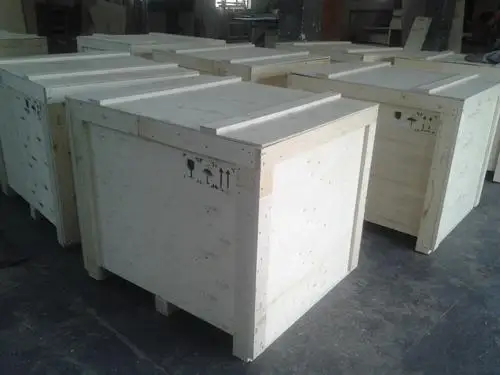Exploring Ideal Habitats for Healthy and Happy Pigs in Modern Farming
Nov . 27, 2024 09:06 Back to list
Exploring Ideal Habitats for Healthy and Happy Pigs in Modern Farming
The Importance of Well-Designed Pig Pens
Pig farming is one of the oldest and most economically significant agricultural practices in the world. As demand for pork continues to rise globally, the importance of proper pig husbandry practices—including the design and management of pig pens—cannot be overstated. Well-designed pig pens play a critical role in the health and productivity of pigs, as well as in ensuring the efficiency of farming operations.
Understanding Pig Pens
Pig pens are the housing spaces specifically designed for pigs, accommodating their needs for comfort, safety, and hygiene. The design of these pens can significantly impact the well-being of the animals, affecting everything from growth rates and reproductive success to overall health. A properly constructed pig pen allows for natural behaviors, promotes social interactions, and minimizes stress, leading to healthier pigs and potentially higher yields for farmers.
Design Elements of Pig Pens
1. Space and Comfort One of the foremost considerations in pig pen design is adequate space. Pigs are social animals and require sufficient space to move, play, and interact. Crowded conditions can lead to stress, aggression, and even disease outbreaks. The general guideline is to provide at least 2 square meters of space per pig, depending on their weight and age.
2. Ventilation Good airflow is crucial in any livestock operation to reduce the buildup of ammonia and other harmful gases that can be detrimental to pig health. Proper ventilation helps maintain a comfortable temperature and reduces humidity. Many modern pig pens incorporate natural and mechanical ventilation systems to ensure that fresh air circulates consistently.
3. Bedding The choice of bedding material can greatly affect the pigs' comfort and hygiene. Straw, wood shavings, and heat-treated paper are commonly used materials. They provide insulation and help manage moisture, which is essential in preventing the spread of diseases. Regularly changing bedding is vital to maintain cleanliness and reduce the risk of infections.
4. Feeding and Water Supply Access to clean water and nutritious feed is crucial for the growth and health of pigs. Feeding systems should be designed to reduce waste and ensure that all pigs can access food and water simultaneously. Automatic feeders and water dispensers can enhance efficiency and ensure that animals receive adequate nutrition.
pigs pens

5. Waste Management Efficient waste management systems are essential in pig pen design. Pigs produce a significant amount of waste, which can lead to health issues if not managed properly. Pens should be equipped with drainage systems to promptly remove waste and excess water, thereby maintaining a clean environment.
6. Safety and Security The physical design of pig pens should prioritize the safety of both pigs and farm personnel. Strong fencing, secure gates, and robust construction materials are necessary to prevent escapes and protect the pigs from predators. Additionally, pens should be designed to prevent injury from sharp edges or hazardous materials.
Health and Welfare Considerations
Incorporating welfare standards into the design of pig pens not only fulfills ethical responsibilities but can also have positive economic implications. Pigs that are well cared for tend to have lower mortality rates, better growth performance, and higher reproductive success. Furthermore, adhering to welfare regulations helps farmers avoid legal penalties and enhances their reputation within the community.
Sustainability
Finally, sustainability is a critical factor in modern pig farming. The design of pig pens should consider resource efficiency, including water usage, energy consumption, and waste recycling. Sustainable practices, such as utilizing manure as fertilizer, can reduce the environmental footprint of pig farming while simultaneously benefitting the farm’s input costs.
Conclusion
In conclusion, the design and management of pig pens are foundational aspects of successful pig farming. By prioritizing space, ventilation, cleanliness, nutrition, safety, and sustainability, farmers can create optimal living conditions for pigs. This, in turn, leads to healthier animals, improved productivity, and ultimately, a more profitable farming operation. As the global demand for pork continues to grow, the pig farming industry must adapt and innovate, ensuring that animal welfare and productivity go hand in hand.
-
Automatic Feeding Line System-Pan Feeder Nipple Drinker|Anping County Yize Metal Products Co., Ltd.
NewsJul.29,2025
-
Hot Sale 24 & 18 Door Rabbit Cages - Premium Breeding Solutions
NewsJul.25,2025
-
Automatic Feeding Line System Pan Feeder Nipple Drinker - Anping County Yize Metal Products Co., Ltd.
NewsJul.21,2025
-
Automatic Feeding Line System Pan Feeder Nipple Drinker - Anping County Yize Metal Products Co., Ltd.
NewsJul.21,2025
-
Automatic Feeding Line System - Anping Yize | Precision & Nipple
NewsJul.21,2025
-
Automatic Feeding Line System - Anping Yize | Precision & Nipple
NewsJul.21,2025






